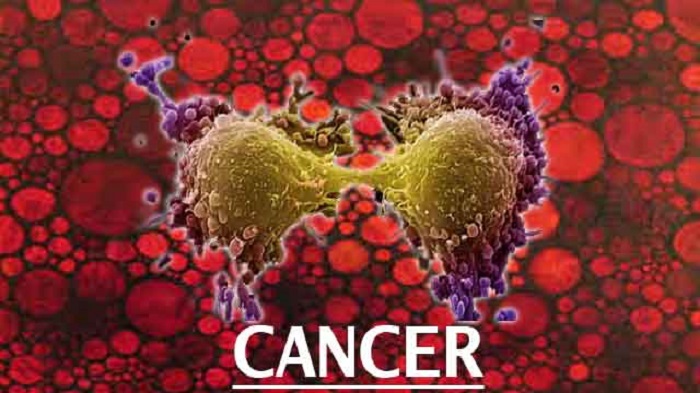Americans could prevent roughly half of all cancer deaths by doing these four things

For men, universal embrace of this lifestyle could avert or delay 67% of cancer deaths and prevent 63% of new malignancies each year, researchers calculated. If all of the nation’s women did the same, their yearly cancer mortality rates would fall by 59% and new cancers would drop 41%.
The findings, published online this week in the journal JAMA Oncology, underscore how extensively public health measures aimed at fostering healthful lifestyles could cut into a disease that will claim the lives of 600,000 Americans this year and upend the lives of 1.6 million by turning them into newly diagnosed patients.
See the most-read stories in Science this hour >>
The new analysis was based on cancer rates and health behaviors in two large and long-running studies of health professionals — the Nurses’ Health Study and the Health Professionals Follow-Up Study. The researchers, from the Harvard T.H. Chan School of Public Health in Boston, also used data from the National Cancer Institute’s comprehensive Surveillance, Epidemiology, and End Results Program.
The effect of a healthful lifestyle varied according to gender and cancer type. For instance, women who followed the strictures on smoking, drinking, weight and exercise could reduce their lung cancer risk by 85% and their colorectal cancer risk by 60%. For men, the corresponding figures were 90% and 50%.
The researchers also calculated that women who took good care of themselves could reduce their risk of pancreatic cancer by 53%, endometrial cancer by 37%, ovarian cancer by 34% and breast cancer by 15%.
For men, a healthful lifestyle could mean a 62% reduction in bladder cancer risk, a 40% reduction in prostate cancer risk and a 36% reduction in kidney cancer risk, according to the study.
The study’s findings present a significant challenge to research published last year that said as many as 80% of cancers might be attributable to factors beyond the control of individuals — the “bad luck” hypothesis. Instead, the new research offers evidence that bad behavior trumps bad luck as a cause of cancer.
The results suggest the most effective way to fight cancer is to promote healthful habits that foster cancer prevention. Doing so could reap even greater gains than investing in biomedical research to improve cancer vaccines and therapies, the strategy embodied in President Obama`s recently announced “Cancer Moonshot” initiative.
“Primary prevention should remain a priority for cancer control,” wrote the study authors, Drs. Mingyang Song and Edward Giovannucci.
Changing Americans’ unhealthful habits may seem an easier task than inventing new cancer-fighting strategies in the lab. But to reap the remarkable gains seen in the study, Americans would need to make remarkable turnarounds.
About 17% of adults in the United States — roughly 40 million Americans — continued to smoke cigarettes in 2014, according to the Centers for Disease Control and Prevention, and at least a fifth of U.S. adults have a history of smoking.
Fully 38% of American adults are obese — with a body mass index above 30 — and close to 33% have a BMI over 25, the cutoff point for being overweight. While Song and Giovannucci allowed a BMI as high as 27.5 in their definition of “healthy lifestyle,” that still leaves more than 80 million American adults who, studies show, are vanishingly unlikely to diet their way to a healthful weight and maintain it for a long period.
Nor is regular exercise an easy sell to an increasingly sedentary U.S. public. About 22.5% of American adults report that they participated in no physical activity outside of their job requirements in the last month, and only 1 in 5 meets the government’s recommended guidelines for aerobic physical and muscle-strengthening activity.
In the JAMA Oncology study, people who got less than 75 minutes of high-intensity exercise or 150 minutes of medium-intensity physical activity per week were considered to have an unhealthful lifestyle. About half of white Americans — the ones who are the closest match to the doctors and nurses in the study —achieve that.
Roughly 60% of American adults consume less than a single alcoholic drink per week, but heavy drinking is a common practice for nearly 20% of them. A quarter of adults acknowledge they have engaged in binge drinking — downing four or five servings on the same occasion — in the last month. And 6.7% reported they were heavy drinkers, binge-drinking on five or more occasions in the last month.
In the study, drinking an average of more than one serving of alcohol per day for women or two for men would qualify a participant for the “unhealthy lifestyle” category.
Considering the lack of diversity among the study population, the results “may not be generalizable to other ethnic groups,” the authors acknowledged.
Even so, the lessons are clear, according to a commentary that accompanied the study.
“As a society, we need to avoid procrastination induced by thoughts that chance drives all cancer risk or that new medical discoveries are needed to make gains against cancer,” wrote Dr. Graham A. Colditz and Siobhan Sutcliffe of Washington University School of Medicine in St. Louis. Instead, they wrote, “we must embrace the opportunity to reduce the collective cancer toll by … changing the way we live.”
Efforts to promote those changes, they added, “will be our fastest return on past investments in cancer research over the coming decades.”















































